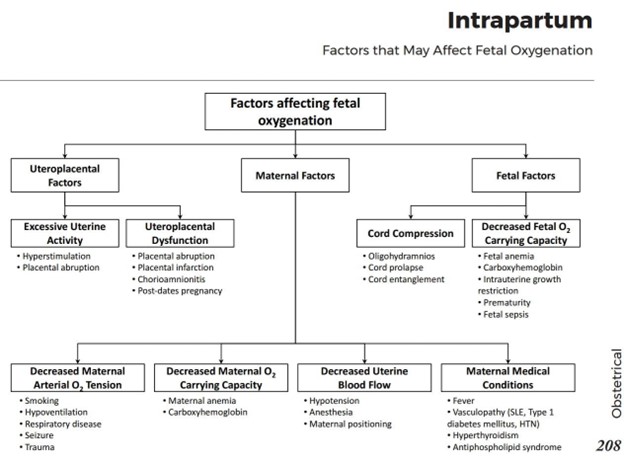Comparison with contraction stress test (CST)
Comparison with contraction stress test (CST) ( 5 Questions)
(Select all that apply) A nurse is educating a client about the factors that can affect fetal oxygenation during labor.
The nurse should include which of the following factors in the teaching?
Maternal hypotension can reduce the uterine blood flow and cause fetal hypoxia.
Maternal fever can increase the maternal and fetal metabolic rate and oxygen demand, as well as cause uteroplacental dysfunction due to chorioamnionitis.
Umbilical cord compression can impair the fetal blood flow and oxygen delivery.
Fetal sleep cycles do not affect fetal oxygenation during labor. Fetal sleep cycles are normal variations in the fetal heart rate and variability.
Fetal position does not affect fetal oxygenation during labor. Fetal position may affect the mode of delivery, but not the oxygen supply to the fetus.
These are the factors that can affect fetal oxygenation during labor by decreasing the placental blood flow or the fetal oxygen carrying capacity.
• Choice A is correct because maternal hypotension can reduce the uterine blood flow and cause fetal hypoxia.
• Choice B is correct because maternal fever can increase the maternal and fetal metabolic rate and oxygen demand, as well as cause uteroplacental dysfunction due to chorioamnionitis.
• Choice C is correct because umbilical cord compression can impair the fetal blood flow and oxygen delivery.
• Choice D is wrong because fetal sleep cycles do not affect fetal oxygenation during labor. Fetal sleep cycles are normal variations in the fetal heart rate and variability.
• Choice E is wrong because fetal position does not affect fetal oxygenation during labor. Fetal position may affect the mode of delivery, but not the oxygen supply to the fetus.

